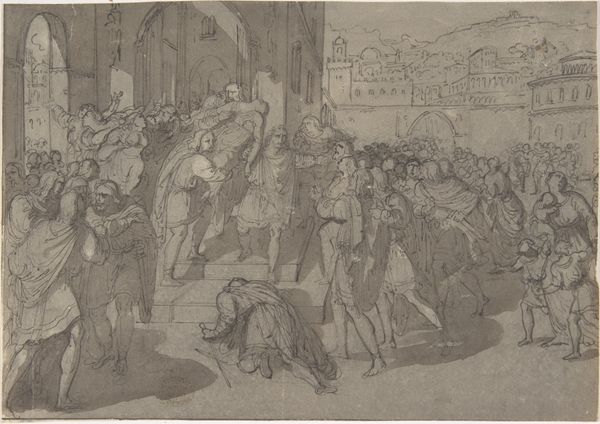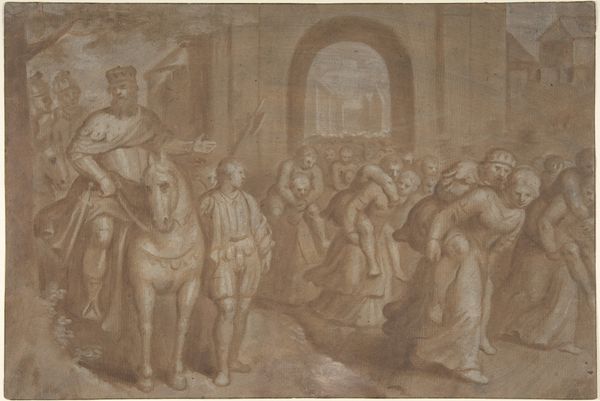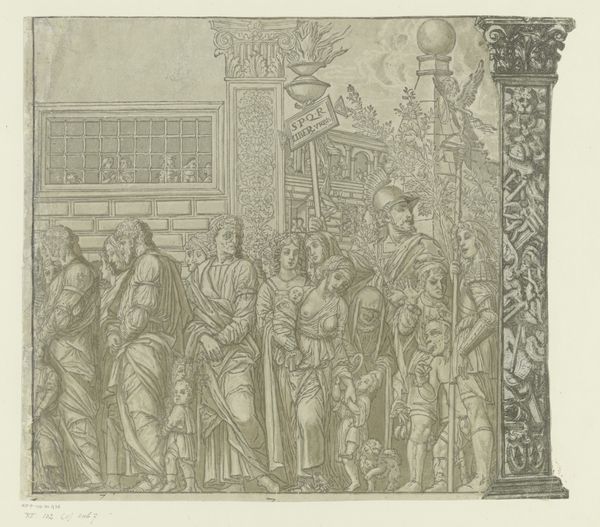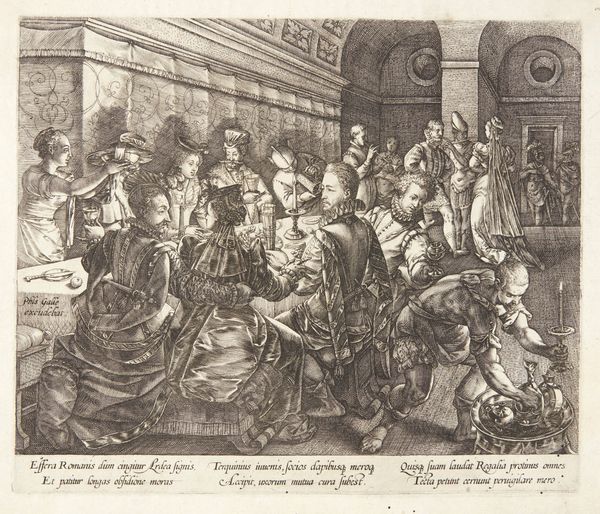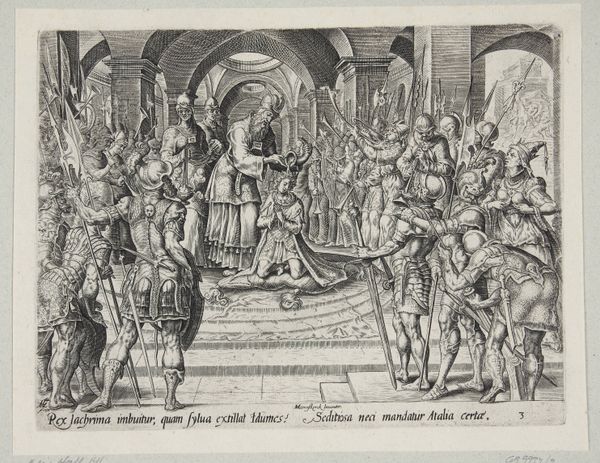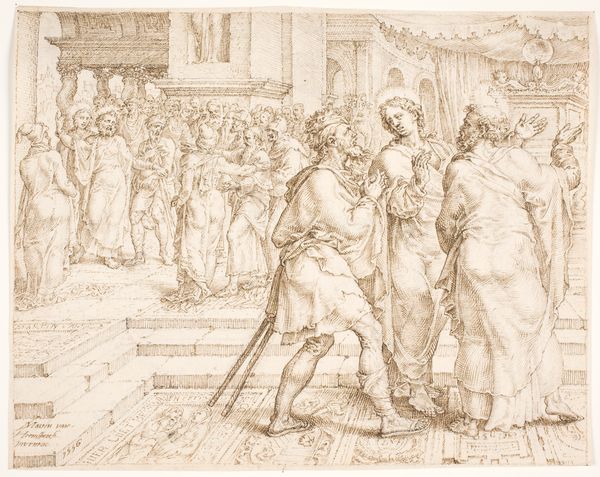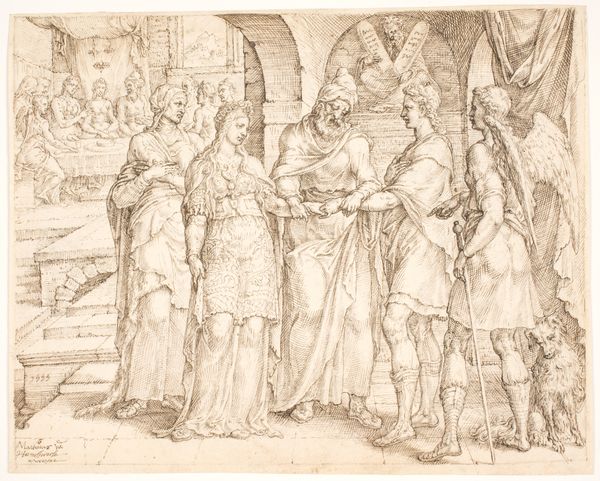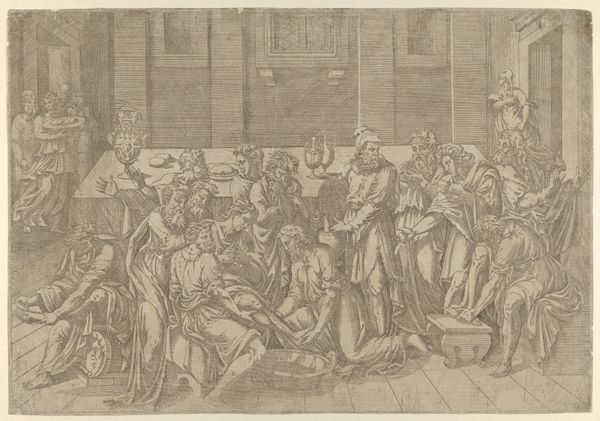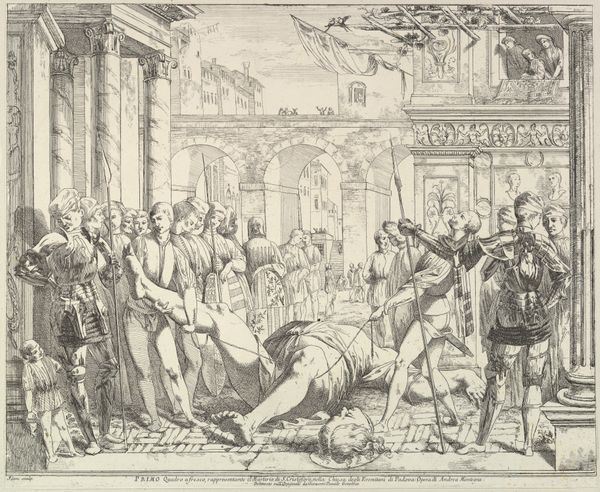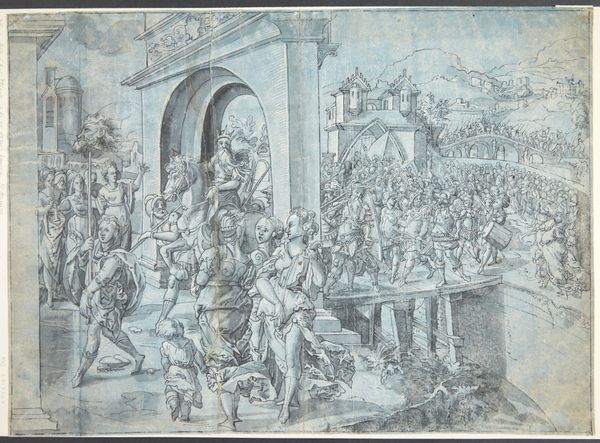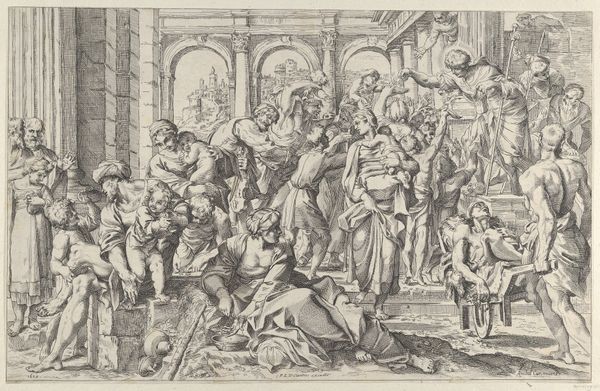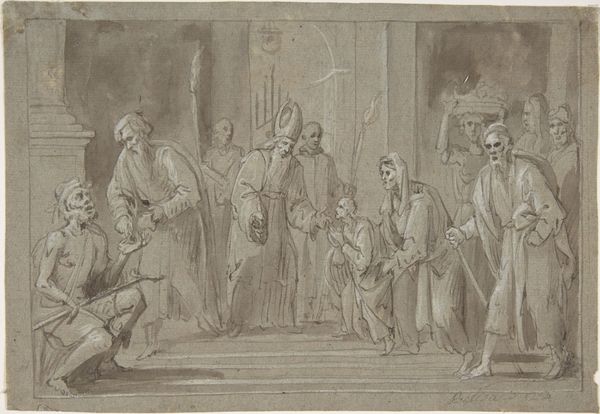
drawing, print, engraving
#
drawing
#
baroque
# print
#
figuration
#
line
#
genre-painting
#
history-painting
#
engraving
Dimensions: Sheet (Trimmed): 7 1/4 × 10 1/2 in. (18.4 × 26.7 cm)
Copyright: Public Domain
Curator: This intriguing engraving, created sometime between 1671 and 1699, presents "A princely wedding performed by a bishop." Its artist remains anonymous. Editor: My first impression? It feels incredibly detailed, yet somehow chaotic. The sheer number of figures crammed into the space, along with the almost frantic lines of the engraving, give it an energetic but somewhat unsettling mood. It makes you think of labor because this type of reproduction would make the picture more readily available than just for the wealthy class to own. Curator: I see that energy too. Think of the implications inherent in staging such an extravagant display, not just in terms of power and status, but also of the church’s intersection with dynastic ambition at that moment. Editor: Exactly! The materials of the garments, rendered through intricate lines, point towards luxurious textiles and immense expenditure, further fueling the class divide that has and still does affect societal hierarchies. How do the masses view displays like this during the late baroque era and how does that inform its creation? Curator: The fact that it is an engraving means that we should consider the intention of reproducing this for greater dissemination to various viewing populations, in spite of wealth or class, allowing commentary by an expanded range of public opinions. Think too about how visual depictions, such as this, function as performative affirmations of hierarchical structures and also can cement gender roles—note who is active versus passive in the scene. Editor: Right, we must acknowledge those power dynamics are central. Did the artist intentionally amplify the visual clutter to make a point about excess and, perhaps, underlying social tensions? It feels like a statement about material accumulation—it begs you to challenge its presence. Curator: Or is the artist celebrating a legitimate union within the existing order, and emphasizing social status in the best possible way by showcasing what that meant at that moment. Ultimately the question of whether the scene depicted accurately is the basis from which to examine its representation of society’s inequalities. Editor: It all highlights the tensions between wealth and labor so prevalently depicted in Baroque imagery. I guess it prompts me to reflect on how displays of wealth remain a potent, and sometimes unsettling, symbol in contemporary society as well. Curator: I agree; unpacking the symbolism interwoven into displays of wealth across periods certainly provides insight into enduring social values. It’s important to delve deeply and appreciate this representation of the wedding.
Comments
No comments
Be the first to comment and join the conversation on the ultimate creative platform.
